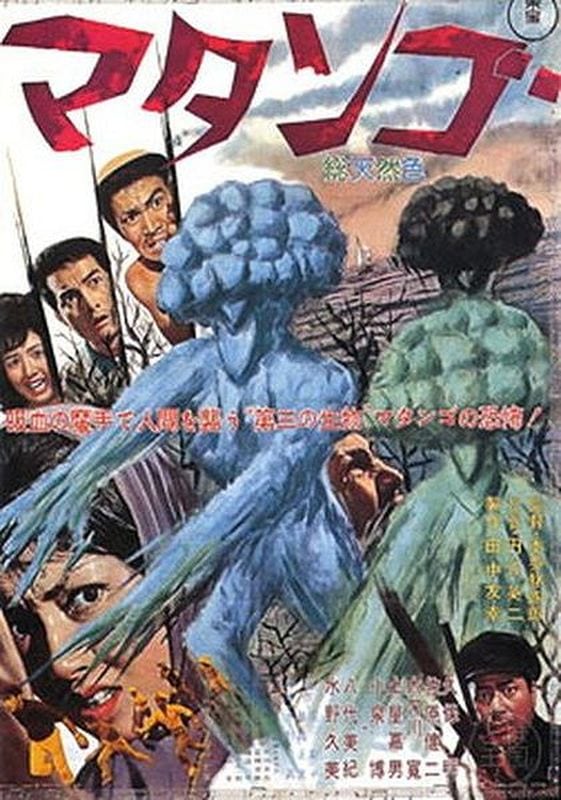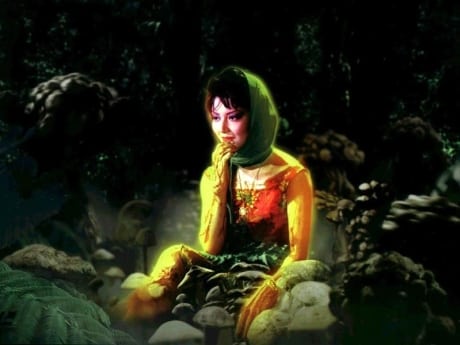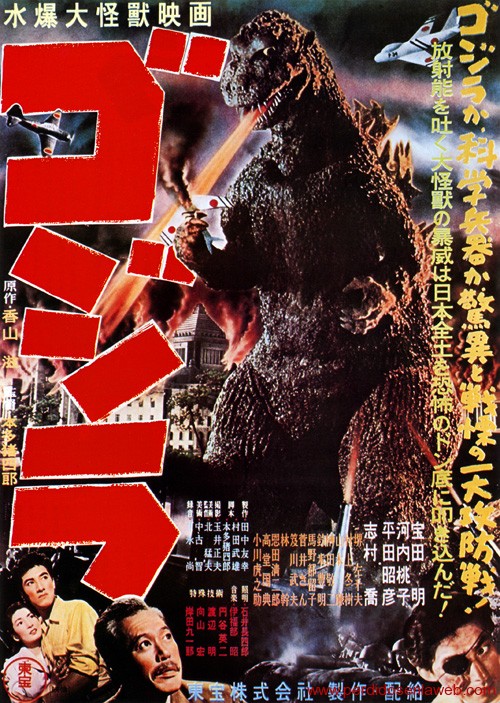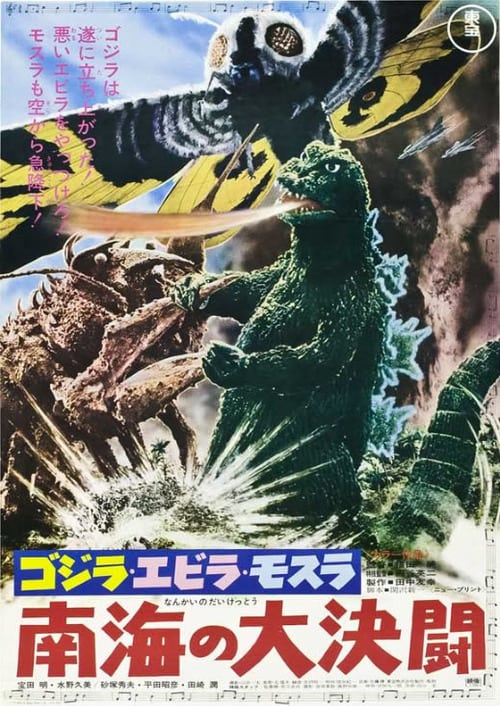Matango (1963)
Directed by: Ishirô Honda
Written by: Takeshi Kimura
Starring: Akira Kubo, Hiroshi Koizumi, Kenji Sahara, Kumi Mizuno
HCF REWIND NO.117. MATANGO AKA MATANGO FUNGUS OF TERROR, ATTACK OF THE MUSHROOM PEOPLE [Japan 1963]
AVAILABLE ON DVD
RUNNING TIME: 89 min
REVIEWED BY: Dr Lenera, Official HCF Critic
In Tokyo, a man visits another man who is being held in the psychiatric ward of a hospital. He tells his visitor that what happened to him sounds crazy but that he is not insane. He tells of how he was one of a group of holiday makers on a yacht. They are wealthy businessman Masubuma Kasai; his bored girlfriend singer Meimi Sekiguchi; professor of psychology Kenji Morrei, his girlfriend, student Akiko Soma; and mystery writer Etsuro Yoshida, accompanied by sailor Senzo Koyama and skipper Naoyuki Sakuda. Nearly capsized by a storm and a ship which almost crashed into them, they are forced adrift. Arriving at a seemingly deserted island, they find a deserted, fungus covered wreck. They discover that it was a research vessel examining the effects of radiation on plant and animal life, and also a strange fungus called Matango……
Until its DVD release a few years ago, the American title of this movie was Attack Of The Mushroom People, which makes it sound like the silliest kind of B-movie. It’s actually one of the most intriguing and easily the most downright strange picture Toho ever made. With films like this and the very flawed but fascinating The H-Man to his credit, it’s interesting to speculate how Ishiro Honda’s career might have gone if his giant monster movies hadn’t been so popular and caused him to be typecast as a director of them. In both films, and especially this one, he shows a real knack for both horror and weirdness, even though he once said he wasn’t interested in scaring people, while Matango also incorporates much social commentary and has a level of sophistication which might seem surprising to some, though I hope if I’ve achieved anything in this series of reviews, it’s that many of the Toho science-fiction and monster movies are not as daft as they are generally considered. In any case, Matango is quite extraordinary, a haunting, dreamlike chiller that operates on several levels.
The inspiration for Matango was a 1907 short story by William Hope Hodgson called The Voice In The Night, in which a two people are marooned on an island and succumb to a fungus-like growth which has absorbed other humans previously. This tale was adapted faithfully in 1958 for an episode of the TV series Suspicion. I wonder if Matango was also influenced by a chapter of The Odyssey called The Land Of The Lotus Eaters where the sailors are fed a flower which makes them not want to leave an island? Takeshi Kimura wrote the final screenplay based on a treatment by Masami Fukushima and Shinichi Hoshi. The film was nearly banned in Japan due to the fact that the makeup that some of the cast wore as they were turning into mushrooms was very reminiscent of how many people looked after the atomic bombing of Hiroshima and Nagasaki. It was not a commercial success, ensuring that for a while from then on Toho made hardly any fantasy movies that didn’t contain a huge beast. Matango was the first Toho film that they dubbed themselves in Hong Kong, but it still by-passed US cinemas and premiered on TV in 1965, where after many years it developed a cult following of bored late-night TV viewers coming across this peculiar but evocative film. It was never cut or re-edited, which is why there is no bit at the bottom of this review describing the US version.
Now Matango is not an action-filled piece, and only really delivers on that score towards the end. Instead, it proceeds at a slow but steady pace throughout, building up an intensely claustrophobic atmosphere as it does, especially when they all board the deserted ship which is a masterpiece of decayed design. In a demonstration of superb writing, we are told what all the characters are like within a couple of minutes without it seeming forced, and even if the two women are somewhat simplified into bad girl and good girl, all the male characters are well drawn. It has been remarked how similar some of the characters are to those in Gilligan’s Island. Maybe this film was an inspiration, and maybe not, but everything inspires something else, and I wonder if William Golding’s Lord Of The Flies was also a partial basis for Matango? Anyway, we are soon treated to a really spooky image of a ship looming out of a fog, after which everyone arrives at the island. This initially seems like some kind of tropical paradise, but becomes more and more of a menacing background as the film progresses, right down the weather, which ends up almost constantly raining.
We are left in no doubt that these people would tear themselves apart even if they hadn’t found mushrooms which, if eaten, make them change into something non-human. Envy, greed and hunger would most definitely have done them in. This starts to happen anyway, leading to a rare Honda sexual moment as Meimi begins an affair, a very passionate kiss and clinch. When people start eating the mushrooms, the act of consuming the fungus is shown to be considerably pleasurable, even sensual, as well as addictive, and the place where they grow is a Garden of Eden, with one particular scene in the film replaying the tale of Adam and Eve and the apple, a scene in which by the way Kumi Mizuno is lit up like a goddess and has never looked more alluring. The allegorical aspects of a story where humans, who seem to represent humankind’s weaker aspects, seem to find a paradise without responsibility but in doing so lose that humanity, are plain to see. There have been several explanations for Matango, from it being about drug addiction to the negative encroachment of Western culture on Japan,and maybe they’re all right. You can interpret stories like this in various ways, because they are rife with meaning. In any case, Honda, who usually showed a positive view of humanity in his films, really doesn’t seem to think much of people here, despite a rather out-of-place line about half-way through which Honda probably wrote and inserted himself.
As its stifling atmosphere becomes almost unbearable, rather than emphasise physical horror, Honda prefers to tease us in a very unnerving manner with single-second shots like a deformed face through a window, a reflection in a cracked mirror, and a stuffed turtle. One half-transformed Mushroom Man seems like it’s going to attack everyone, but then fades away like a ghost. Disappointing in terms of thrills maybe, but appropriately odd. Now some say that the fully transformed Mushroom Men look silly. I think they look incredibly freaky, still human-like but with mushrooms growing everywhere, especially on the heads, and they make this horrible augmented squeeking noise which I can never get out of my head for days whenever I watch the film. I think they’re a positively nightmarish creation, though of course Honda is more interested in what the human characters are doing. The cast are uniformally excellent, with Kumi Mizuno, Akira Kubo, Kenji Sahara, Hiroshi Koizumi, and Yoshio Tsuchiya all doing their best work for Toho. This is just as well, because Hijemi Koizumi’s camera usually keeps close to the cast, enhancing the claustrophobia and the sense of repressed desires and emotions ran riot.
Sadao Wakemiya’s score, though it opens with uplifting Hawaiian-type music and sometimes incorporates the saxophone, is mostly appropriately moody and downbeat. There is the odd aspect which doesn’t work in the flm, most notably a gun which seems capable of firing endless bullets without being reloaded. Mostly though, Matango is very near to being a neglected masterpiece. The care given to almost every aspect of the production is striking. Yes, it moves very slowly,and some things are unexplained, like for instance some voices which try to lure the two women into the forest, but I think this was intentional. Matango is an almost-hallucinogenic nightmare on film and Ishiro Honda’s best example of direction throughout a single movie, totally focused on the story while constantly surprising us. We are given a twist ending that may not actually be that much of a twist, but the last shot is not of the narrator’s deformed face but the bright city of Tokyo at night, something he can no longer be a part of, Honda stressing the poignancy rather than the horror.
Rating: 

















Be the first to comment